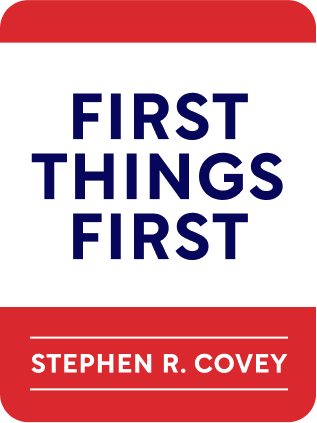

This article is an excerpt from the Shortform book guide to "First Things First" by Stephen R. Covey. Shortform has the world's best summaries and analyses of books you should be reading.
Like this article? Sign up for a free trial here .
Do you plan your week in advance or go with the flow? Why is it important to plan your week in advance?
When you plan your week in advance, you are engaging in an act of self-renewal. This dedicated time gives you the opportunity to put things into perspective and reconnect with your priorities.
Keep reading to learn how to plan your week in advance.
Plan Your Week for Balanced Renewal
Weekly planning is a balanced compromise between daily and long-term planning. It connects a bigger-picture perspective with day-to-day actionables.
A week encompasses a natural balance of life: It includes work or school days, evenings, and weekends. This lens is broad enough to incorporate self-renewal on a weekly and daily basis.
Weekly Self-Renewal
As you plan your week through the Quadrant II organizing process, you can proactively schedule in rest and renewal time that is genuinely rejuvenating.
Many people fall into the trap of getting so burnt out that they escape to Quadrant IV activities (which are neither urgent nor important) to rest, but the effect is the same as munching on potato chips when you’re hungry — it only temporarily satiates you and doesn’t truly satisfy your need. True rest and renewal is a Quadrant II activity because it is important and necessary for your well-being.
Quadrant II renewal activities include:
- Investing quality time in your important relationships with family and friends.
- Participating in religious activities, which keep you connected with your values.
- Renewing your energy through rest and recreational activities.
- Giving an outlet to your talents through devoting time to your interests and hobbies.
- Performing community service.
When you plan your week in advance, you are engaging in an act of renewal. This dedicated time gives you the opportunity to refresh your awareness of your basic needs and principles, reconnect with your four human endowments, recommit to your vision and goals, and maintain balance among your roles.
Daily Self-Renewal
When you’re looking at the scope of a week, you can plan time for daily renewal in a way that’s balanced and maximizes the benefits in your life.
Daily planning can cause you to subdivide time in chunks that are too small. If you have four priorities of exercise, quality time with your children, reading, and meditation, daily planning might lead you to divide your hour of renewal into 15 minutes for each of these activities. However, you’ll feel greater benefits in every area if you can devote more time to each activity — how much of a sweat can you work up in 15 minutes? How deeply can you dive into your meditation in only 15 minutes?
Weekly planning lets you take a broader view so that over the course of the week you can devote the same amount of time to each activity, but not do every one each day. Instead, you can exercise for 45 minutes a day on three days, spend an hour with your children on two days, and read and meditate for half an hour each on the other two days.
Plan Your Week to Access Whole-Parts-Whole Perspective
Choosing the lens of a week is all about balancing the big picture and the details. Your mission statement provides the “whole,” or the big picture, while the daily and weekly time management addresses the “parts,” your roles and goals. If you get too caught up in the whole you lose focus, but if you get lost in the parts, your life becomes compartmentalized and fragmented. In order to maintain perspective, you start with the whole, the big picture, zoom into the parts, the weekly and daily goals, and then zoom out again to the whole.
It’s critical that you are constantly aware of how the whole and the parts are connected, and that each part of life is interrelated; each of your roles represents a part of who you are, and each one impacts the others. The whole-parts-whole view helps you keep in perspective how everything is interconnected, allowing you to create synergy among your roles and goals rather than weakening your power in each by creating barriers among them.
Create Synergy Among Your Goals
Synergy is the concept that a whole is greater than the sum of its parts; for example, two pieces of wood joined together can hold more weight than each could separately. Similarly, if you combine activities to accomplish two goals at once, you can achieve more than if you’d dealt with each separately.
If today’s goals include exercising and spending quality time with your son, why not invite your son on a walk or to play a game of tennis with you? You’ll address two goals — in two different roles — at once and end up with more time in your day for other things. Plus, you may find that your son really enjoys tennis and you’ve now found a new activity you can do together.
The point of creating synergy among your goals is to achieve greater results — not to cram as much as you possibly can into each day (that would be reverting back to an efficiency paradigm). There won’t always be opportunities for synergy among your goals; some activities require dedicated time and focus. But when you can find a way to naturally combine activities, you’ll feel peace and a sense of increased capacity.
Weekly Planning Provides Context
Context determines your priorities. If you’re looking at the context of the next hour, your priorities will be whatever the most urgent tasks are in front of you. If your context is your lifetime, your priorities will be much broader and less urgent in nature.
Weekly organizing puts content in context, connecting your activities (the content of our days) with your mission. This allows you to schedule your priorities, fitting the big rocks — the Quadrant II activities — into your schedule before filling in the gaps with the gravel and sand, or the less important but urgent activities.
Create Time Zones in Your Schedule
One useful strategy for scheduling your priorities is to create time zones. Time zones are blocks of time that are set aside for high-priority Quadrant II activities, but they are more flexible than specific appointments.
You may create a three-hour time zone every Saturday morning for family time. This doesn’t mean that every Saturday you’ll have family time that starts strictly at 9 a.m. and concludes by noon; rather, blocking out this time helps you schedule other activities around it and channel family activities into that time zone (when possible).
At work, you might create time zones for one-on-one meetings with employees or long-term planning. You may not always have meetings to fill those time zones, but when you do get a meeting request you’ll already have the time blocked out to schedule it.
Time zones create established time for certain activities that other people become aware of and can plan around; your friends know you’re most likely going to decline any invites for Saturday morning plans because it’s your family time, and your employees know they can most likely plan to sit down with you on a Tuesday afternoon because that’s your time zone for meetings.
Don’t fill your schedule with time zones, but use them to ensure you allocate time for high-priority activities. If a one-time event disrupts a time zone — like a mandatory conference call during your time zone for one-on-one meetings — you have the flexibility to move one-on-one meetings to another time slot during that week without losing the time altogether, and by the end of the week, you’ll have still accomplished all of your priorities.
Build Preparation Time into Your Schedule When You Plan Your Week
Often, when people get stuck in a cycle of urgency, certain activities become urgent because those people didn’t take the time to prepare. If you plan your week ahead of time, you can anticipate what’s coming up and build in time for adequate preparation.
If you plan your week, and you see that the week ahead includes a big presentation on Thursday, you can schedule some time on Tuesday and Wednesday to research and rehearse for it. Having that advanced awareness allows plenty of time for preparation, and even encourages it. Even if something changes and your presentation is pushed back, you’ll already be prepared and can take that change in stride.
Checklist: Reinforce Your Weekly Perspective When You Plan Your Week
Managing your time through weekly planning provides perspective and nurtures your ability to create synergy among the various parts of your life, which strengthens the whole. Use these strategies to reinforce and capitalize on this weekly perspective.
- Assign a specific day and time each week to do your Quadrant II organizing. Do this in a place that’s quiet and encourages you to be focused and reflective.
- As you go through the week, notice how you handle certain situations differently because of your weekly perspective. Write these down in your planner; at the end of the week, reflect on how this perspective influenced your actions.
- Dedicate a day during the week for renewal and reflection, not just recreation. After doing this for a month, reflect on how this has impacted your life.
- Set up a weekly organizing meeting with the people you live or work with. During the meeting, work together to find ways to create synergy by coordinating your activities to achieve everyone’s goals more effectively.

———End of Preview———
Like what you just read? Read the rest of the world's best book summary and analysis of Stephen R. Covey's "First Things First" at Shortform .
Here's what you'll find in our full First Things First summary :
- How to work effectively, not just efficiently
- Why you need to think more about what you're spending time on than how much time you're spending
- The 6 steps to effectively schedule and prioritize important activities






